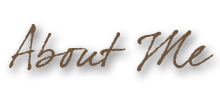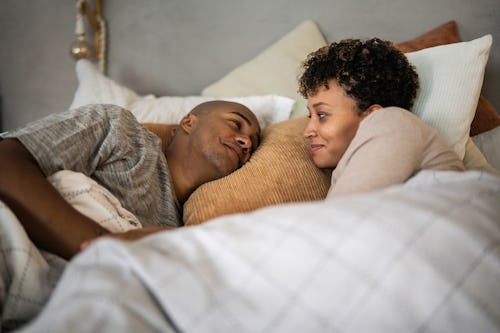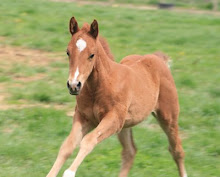I am still trying to catch up to what happens on a farm when you are gone for three days and then it sleets and freezes fast when you get here, so I still am not ready to post my pics etc from the weekend.
I will give you a teaser though, with some of the first pics that came up in my photoshop window, and for people who do not know anything about cutting, it will probably look crazy to you.
There is nothing significant to these pics, other than they popped up in a series so I am using them to show how dynamic even a young cutting horse only halfway through his training is. It also shows why we like them little (14 hands or so as compared to a Thorobred racehorse, who will be 16-17 hands tall--up to a foot taller than our guys)--it allows them to be quick and not get in their own way when they have to change positions on a dime.
This is Smoother than a Cat, who is a 2 year old colt by Smooth as a Cat, out of a nice daughter of Smart Little Lena. Smooth as a Cat is a young up and coming sire who is producing some great horses, and Smart Little Lena is a legend in the cutting horse world (and is also Smooth as a Cat's own great-grandfather, but that is another story altogether). Funny how horse people talk--does any of that mean anything to a non-horse (and maybe non-dog) people? The horse did not end up selling, after getting only a bid of $17,500, according to the sales company.
These photos were taken during a sale where the horse works some cows while he is being bid on. A small herd--maybe 10 calves- are put in the arena, and they bunch up in the middle of a big round pen. There are three riders on what are called herdholders or turnback riders (depending on where they are standing) that stand near the walls but kind of help keep things under control so that the cutter can show his stuff. This is a different format than a real cutting would be--in that case, there are more cows and they are not in the center of the pen, but at the back of the pen.
Anyway, the rider will choose which calf he wants to work to show off his horse, and fetch it out of the herd--the calf will naturally want to return to the herd and it is the cutter's job to keep him from doing it. In this type of sale format, there is a lot of running around the small herd as the cow tries to outrun the horse---ultimately, if things go right, the calf will give that up and turn to face the cutter. That is very much a simplification of course, but for this story, it will do. Through the pics, note where the rider's hands are--low down on the horse, with the ultimate goal of not really directing him with his hands, but instead using his body and the horse's own decision-making about how to work the cow.
Instead of putting explanations under each pic, I am putting it all together, so that when you scroll through the pics quickly, you can get an idea of how cool it all is in action, kind of like those doodles you put on the corner of a page of a book when you are a kid, then flip through it quickly and it looks like real action.
So in the first photo here, the cow is outside of the frame to the left of the photo--the rest of the herd in this case is at about 2 o'clock behind the cutter. The cow he has chosen is trying to circle and get back to the herd--the cutter has been trotting or even loping to stay with him and from the cutter's position, I can tell that the cow has quickly changed directions and that is what the horse is doing, in order to mirror the cow's movement.
In the second pic, you can see that the cutter has slammed on the brakes--clearly, the calf has stopped or the cutter has caused him to stop. You see the horse's head is low down in the stop--he is likely trying to get eyeball to eyeball with the calf. Note as you look at all these pics that you will see the ends of the reins flying--in the first pic, one is flying out as the horse turns, and in the second one, you can see one hanging low and one flying out to the side as the horse stopped--that is how quick and sharp these movements are.
In the third pic, the horse has rocked back on his butt just enough to sweep those legs and his upper body to his left--the calf was trying to go left, and he was stopping him. Because this is a young horse only halfway through his training, he is a touch behind the calf, which you can tell because the rider is looking off to the right--that suggests the calf has cut back right on him and the rider is watching to predict his movements so he can help the horse--that is common at this stage of the training. While the instinct to do this is bred into these horses, the details of course are not, and he is still learning.
Picture four--the colt has gone right again, but I bet you that his back end did not move much--the way he is primed with his butt low like that allows him to be ready to move off his butt with some explosive power, and also allows him to be ready to go whatever direction the cow does. That is how they do such sweepy movements in the front end--very efficient, and that is part of what makes them so quick.
The last picture is my favorite one of course. The colt has come back left, and look how low he is in the front end. This is an extreme position, but if you look closely, you will see that he has not fallen--he just has his nose so low to the ground mirroring the calf. See the dirt flying as his feet scramble to get him where he needs to be.




Ultimately, the calf will give up and the rider will choose another calf to work. Or if things go terribly wrong, like they did for many of the horses in the semi-finals and the finals, the cow will get around the horse and back to the herd--that is "losing a cow".
Since this was my first time there with a camera quick enough to stop this action and any knowledge of what the hell I was doing, I am sure I probably have 1000 pics of horses selling or in the show, and as I play with them, I will be posting them. Most of the time, I will not have any idea who the horses are, since my interest was more often in experimenting with the pics than anything else. It might be a really boring week for non-horse people on here!
Monday, December 15, 2008
Just a start--and a photo series
Posted by Paige at 10:07 PM
Labels: cutting, NCHA, photography
Subscribe to:
Post Comments (Atom)





















8 comments:
Those are really good pictures Paige. I like the next to the last one best, it clearly shows him getting down without burying him in the dirt. Although I know the low and down is what you want, the photo is better before he's too low.
Horse Lesson on Cutting!
Viewing the pics, with explanations, clearly understand why the "ideal cutter horse" would be 14 hands or so. Smaller is better on this phase of the sport. Can also imagine the excitement of seeing the "horse and calf" eye balling each other and "willing" one or the other to OBEY.
Does this make sense? It does to me. I am learning
Oh yeah, photos are good too. heheh
Enjoy the memories---not the weather
Carol
The pictures look great!!
the last photo looks like the horse has given up , and about to lay down to take a sand bath along with it's rider.
good photo's BTW
Great pictures! Way to capture the action! Great tuturiol too. Looking forward to more pics. I know how you feel about being gone! I am happy to be home!
These pictures are really good Paige! You really should consider coming to some of the cuttings this spring/summer at DuQuoin and taking pics. You could probably even make some extra money at it! Cutters always like good pics of their horses working and we have paid plenty of money in the past for pics at some of the larger NCHA shows. I would love to hear about your trip sometime!
I love watching the cutting horses. I had a friend who did the rodeo shows and I went and saw him once and I loved it. The fact that the horses are so quick and know what to do... it amazes me!!
Nice pics! can't wait to see more.
Post a Comment